At 3D Printing USA, we specialize in providing premium carbon fibre filaments designed for a wide range of 3D printer models. These filaments are used by diverse sectors, including aerospace, automotive, healthcare, and consumer products, driving their increased demand in the USA. We are dedicated to engineering in-house and sourcing top-quality carbon fiber filaments from renowned brands that offer exceptional versatility to cater to the specific needs of our clients.
Explore & shop from our collection today and give wings to your creativity!
Carbon Fiber Filament Brands in Our Collection
Our collection features several esteemed brands that offer high-quality carbon fiber filaments. Here’s a comprehensive list for you to choose from:
3D Printing Canada
Our in-house manufacturing unit of carbon fiber filament offers high-quality, cost-effective options for professional and hobbyist 3D printing needs. These filaments are designed to deliver enhanced strength, stiffness, and dimensional stability due to the incorporation of carbon fiber into the polymer matrix. In our collection, you can choose filaments from a diverse range of colors, diameters, spool sizes, and weights to suit your project needs.
3DXTech
3DXTech is known for its high-performance 3D printing filaments, including advanced carbon fiber composites. These filaments include blends with PLA, PETG, Nylon, and PEEK to provide excellent printability with consistent extrusion and minimal warping. They are suitable for use in high-performance 3D printers with hardened nozzles.
Matter3D
Matter3D provides performance-grade filaments, combining advanced material sciences with carbon fiber to bring out both the mechanical and aesthetic properties needed for professional 3D printing. These carbon fiber filaments are engineered with high-quality polymers such as PLA, PETG, and Nylon infused with carbon fibers. It provides high-impact resistance and toughness, perfect for heavy-duty applications.
Spectrum
Spectrum Filaments is a well-regarded brand in the 3D printing community, known for its wide range of high-quality carbon fiber filaments that are designed to meet the needs of professional users. The filaments from this brand have high tensile strength, stiffness, and excellent thermal resistance. The carbon fiber reinforcement provides enhanced dimensional stability for industrial applications.
Applications of Carbon Fiber Filaments
Aerospace and Aviation
Carbon fiber filament is used extensively in the aerospace industry for manufacturing structural components of aircraft, including wings, fuselages, and tail assemblies, due to its lightweight and high-strength properties.
Automotive Industry
High-performance and luxury car manufacturers use carbon fiber filaments for body panels, chassis components, and interior parts to enhance speed, fuel efficiency, and aesthetics for an automobile.
Marine Industry
Carbon fiber filament is used in the construction of hulls, masts, and other structural components of high-performance yachts and boats to improve speed, stability, and durability. Its resistance to corrosion and high strength make it suitable for parts of submarines and underwater vehicles.
Construction and Civil Engineering
Carbon fiber-reinforced polymer (CFRP) is used for strengthening and retrofitting aging infrastructure such as bridges, buildings, and tunnels, providing increased load-bearing capacity without significant weight addition.
Medical Devices
The manufacturing of lightweight, durable prosthetic limbs is done using carbon fiber filaments as they help enhance mobility and comfort for users. The material's radiolucency makes it suitable for use in imaging tables and support structures, where it does not interfere with X-rays or MRI scans.
Advantages of Using Carbon Fiber Filaments for 3D Printing
High Strength-to-Weight Ratio
Carbon fiber filaments offer a strength-to-weight ratio that is significantly higher than many traditional 3D printing materials. For example, Markforged reports that their carbon fiber composites can have a tensile strength of up to 700 MPa and a tensile modulus of 51 GPa, making them stronger than aluminum while being lighter than steel. This makes carbon fiber an excellent choice for applications in aerospace, automotive, and other industries where reducing weight without sacrificing strength is crucial.
Enhanced Stiffness and Rigidity
The inclusion of carbon fibers in 3D printing filaments significantly increases the stiffness and rigidity of the printed parts. A study by Anisoprint showed that carbon fiber composites exhibit a modulus of elasticity that can be up to 20 times greater than standard PLA. This enhanced rigidity is vital for components that must maintain their shape under mechanical stress, such as structural supports and load-bearing parts.
Improved Thermal Properties
Carbon fiber filaments offer superior thermal properties, including higher heat resistance compared to standard 3D printing materials. For instance, materials like carbon fiber-reinforced nylon can withstand temperatures up to 150°C without losing mechanical properties, whereas standard PLA starts to deform around 60°C. This makes them suitable for high-temperature environments and applications requiring thermal stability.
Superior Surface Finish and Dimensional Stability
Carbon fiber filaments improve the surface finish and dimensional stability of printed parts. The fibers help reduce warping and shrinkage, resulting in more precise and aesthetically pleasing outputs. A study by 3DXTech indicated that carbon fiber-reinforced PLA showed significantly lower thermal expansion coefficients compared to regular PLA, leading to better dimensional accuracy. This reduces the need for extensive post-processing.
Resistance to Fatigue and Wear
Parts printed with carbon fiber filaments exhibit excellent resistance to fatigue and wear, extending their usable life in dynamic applications. According to research by Desktop Metal, carbon fiber composites can endure cyclic loading much better than unreinforced polymers, maintaining their structural integrity over time. This makes them ideal for applications such as gears, bearings, and other mechanical parts subjected to repeated stress.
Recommended Printer Settings for Carbon Fiber Filaments
Here are recommended printer settings for carbon fiber filaments:
- Nozzle Temperature: 220°C - 260°C (depends on base polymer).
- Bed Temperature: 60°C - 80°C for better adhesion.
- Print Speed: 30 mm/s - 60 mm/s to prevent clogging and ensure quality.
- Nozzle Type and Size: Hardened steel or ruby-tipped; 0.4 mm or larger.
- Retraction Settings: Short distance (2-4 mm); moderate speed (20-40 mm/s).
- Layer Height: 0.1 mm - 0.2 mm for a balance of detail and efficiency.
- Cooling: Minimal to moderate, adjusted based on material for optimal print quality.
Choose a suitable one and discover the strength and precision of our carbon fiber filament for your next project.
Frequently Asked Questions
How do carbon fiber filaments differ from regular filaments?
Carbon fiber filaments are composites that contain finely chopped carbon fibers within a polymer matrix, providing enhanced strength, stiffness, and heat resistance compared to regular filaments like PLA or ABS.
Are carbon fiber filaments compatible with all 3D printers?
Yes, carbon fiber filaments are compatible with all 3D printers.
Are there different types of carbon fiber filaments available?
Yes, carbon fiber filaments are available in different polymer bases, such as
- ABS
- ASA
- Carbon
- PA (Nylon)
- PC
- PCTG
- PEEK
- PEKK
- PETG
- PLA
Each offers varying properties suitable for different applications.
How do I store carbon fiber filaments to maintain their quality?
Store carbon fiber filaments in a cool, dry place, preferably in an airtight container with desiccants to prevent moisture absorption, which can degrade print quality.


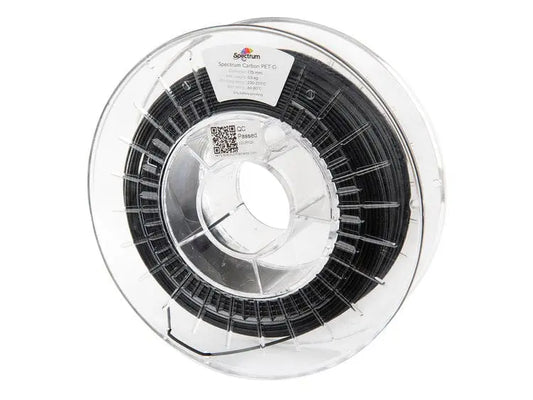
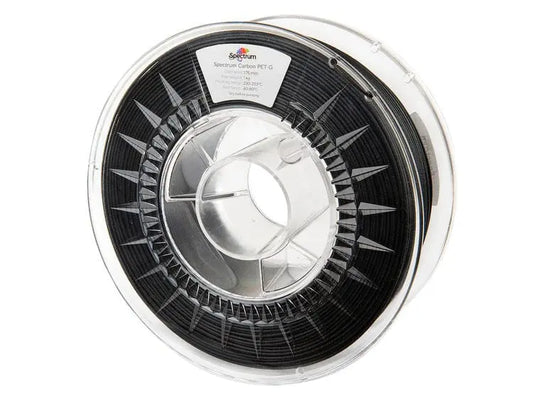
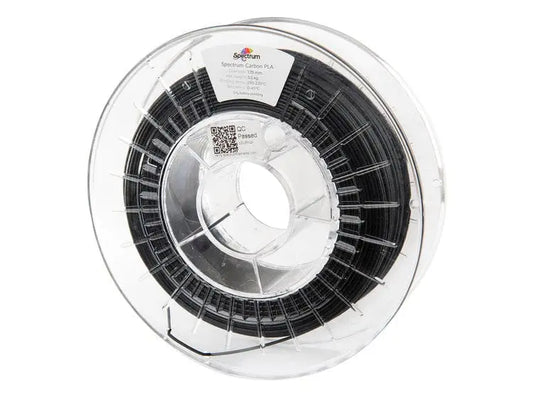


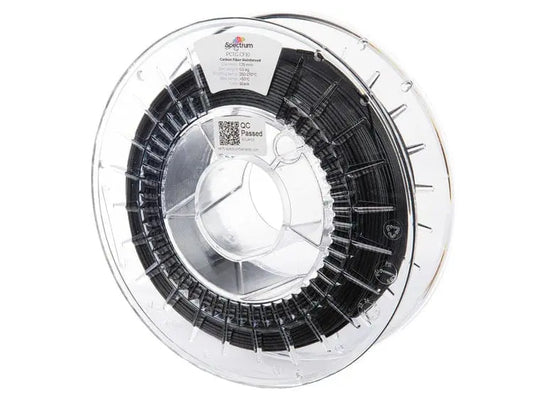
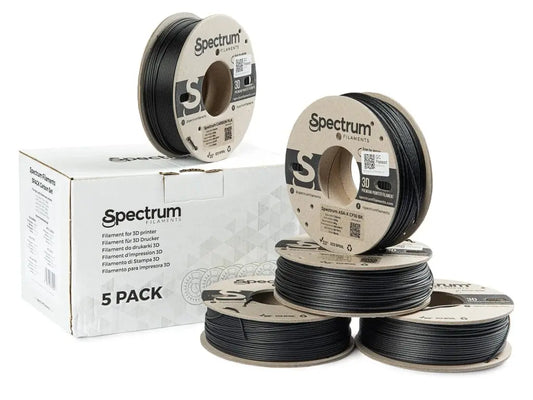



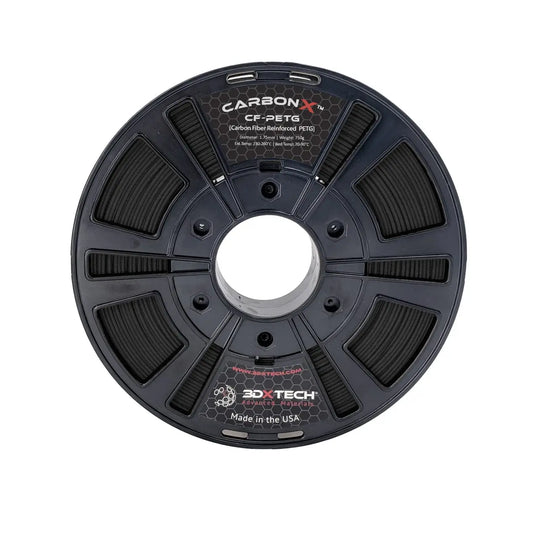


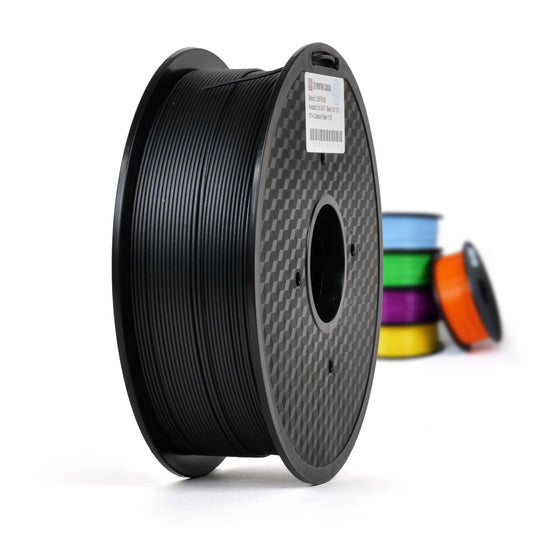






![Negro - Filamento de nailon 3DXTech CarbonX™ PA6+CF [Gen3] de 1,75 mm - 0,5 kg](http://3dprintingusa.com/cdn/shop/files/Black-1.75mm-3DXTech-CarbonX_-PA6_CF-_Gen3_-Nylon-Filament-0.5-kg-3DXTech-39185373.webp?v=1726521514&width=533)












